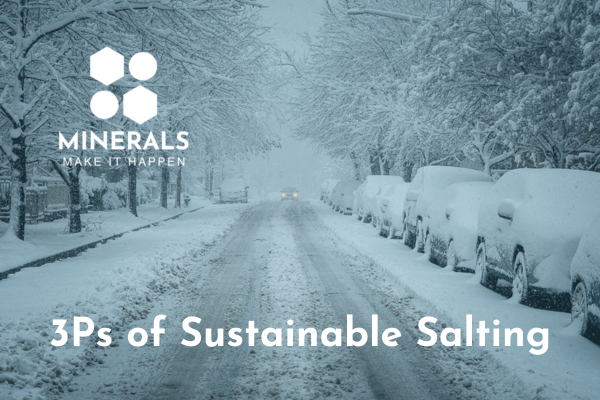January 9, 2025
January 9, 2025

I woke up on Monday this week to six inches of snow out my window in Washington, D.C. Now, it’s not unusual to see snow in the District, but it is rare that we get six inches. Needless to say, the city was caught unprepared again, bringing the capital to a near standstill. With icy roads, treacherous sidewalks, and plummeting temperatures, the importance of effective winter weather management took center stage.
There is one thing homeowners and businesses across the city agree on: salt works.
Salt, particularly sodium chloride, plays a critical role in melting ice and providing traction on roads and sidewalks. However, as simple as spreading salt may seem, its effectiveness depends on the 3Ps of Sustainable Salting: Plan, Prepare, and Protect.
The 3Ps of Sustainable Salting: Lessons from the Storm
Responsible and sustainable salting and appropriate storage practices can reduce this risk of unintended runoff. A joint comprehensive study by environmental researchers at the University of Waterloo and Environment Canada examined groundwater monitoring data and found that chloride levels were reduced by half when best practices were employed. EMA has summarized these best practices into the 3Ps:
Precision: A strategic approach to salting involves assessing road conditions, weather forecasts, and traffic patterns to determine where and when to deploy salt. New technologies, such as variable rate application spreaders and road temperature sensors, ensure that the right amount of salt is applied in the correct places. Additionally, appropriate spreader calibration allows you to measure the exact amount of salt being applied. Precision matters!
Prepare: Preparing surfaces and materials before the storm is essential. Using a salt bring before ice bonds to the surface can lead to up to 75 percent savings in salt usage vs only using salt. Additionally, by pre-wetting and treating the salt before application reduces bouncing and scatter, allowing the salt to stick to the roads better. Treated salt also melts at lower temperatures, making it more effective at temperatures below zero.
Protect: Well-maintained salt storage leads to less salt in the surrounding environment.
Salt’s Impact on Safety and the Economy
Without salt, winter storms can cripple a city. Roads become impassable, businesses shut down, and essential services are disrupted. Effective salting of major highways and public transit routes allowed emergency vehicles to respond to calls and ensured workers could return to their offices as soon as possible. Salt kept the economy moving, even amidst challenging conditions.
A Balanced Approach to Winter Safety
As Washington, D.C., recovers from the recent snowstorm, the importance of salt application best management practices remains clear. When cities and states adhere to the 3Ps of Sustainable Salting, they can keep people safe, safeguard the environment, and maintain economic activity during winter weather. Salt is a simple yet powerful tool, proving once again that minerals make it happen—even in the harshest storms.

January 16, 2025

January 9, 2025